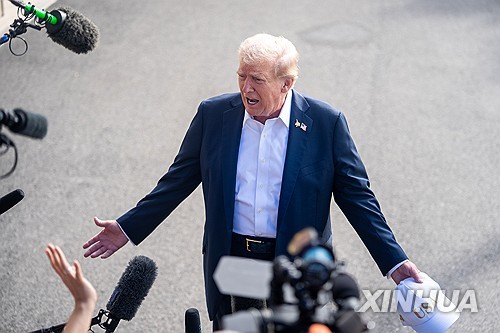In September 2025, President Donald Trump announced a plan to impose a 100% tariff on every film produced outside the United States.
This policy is presented as a way to protect Hollywood jobs and rebuild the domestic production base.
However, the move could ripple across trade rules, the industry’s international ecosystem, and consumer choice.
Its feasibility and the legal and economic consequences deserve careful scrutiny.
“Can tariffs stop it?” What a 100% tariff on foreign-made films would mean
Quick overview
The proposal is dramatic.
In September 2025, President Trump said every film made abroad would face a 100% import tariff when shown or distributed in the U.S.
The stated goal is to bring production work and budgets back home and revive domestic employment.
Meanwhile, applying tariffs to services—like film production—is virtually untested in international trade practice, so legal challenges are likely.
The announcement follows a similar remark in May, which was later rolled back after strong industry pushback.
But this time the language was tougher and the political pressure higher.
Trump singled out California and Hollywood—criticizing Governor Gavin Newsom (California’s governor)—arguing they have lost ground because projects move overseas.
The statement can be read as an attempt to extend trade policy beyond goods and into services.
Looking back
Major U.S. studios have shifted shoots and postproduction work to places such as Canada, the U.K., and New Zealand to save on costs and to take advantage of tax incentives.
As a result, some jobs for American crews have been lost and local businesses that support location shoots have weakened.
That is not just a matter of accounting for production costs; it affects local economies, tax revenue, and the broader supply chain.
On the other hand, the modern film industry is global by design.
Shooting, visual effects, and distribution often involve several countries and specialized facilities.
Therefore, a protectionist, country-by-country approach risks unintended consequences for a sector built on multinational cooperation.

Arguments in favor
Proponents emphasize job recovery.
They argue a 100% tariff would be a decisive tool to redirect production budgets back into the U.S.
Some expect regions like California and North Carolina—places where film production generates broad local economic activity—to see a revival.
Supporters also frame the idea as consistent with protecting strategic industries.
Just as manufacturing has been shielded in past policy debates, cultural industries like film are seen as part of national competitiveness that deserve strong protections.
Further, they claim the tariff could be an effective countermeasure to large foreign incentive programs that lure shoots away.
Suggested tactics include withdrawing certain state tax breaks or restructuring production subsidies to improve bargaining leverage.
Backers hope that even the threat of tariffs could force renegotiations with foreign producers and filming locations.
In the long run, they argue, increased investment in U.S. soundstages and crew jobs would follow.
Arguments against
Opponents call the plan impractical.
They warn that a 100% tariff would amount to an effective ban on many foreign productions and likely violate World Trade Organization (WTO) rules (WTO = World Trade Organization).
Adding tariffs to services is nearly unprecedented and would invite lengthy legal battles.
From an industry perspective, overseas locations and international collaboration are essential.
Varied locations, specialized crews, and cross-border talent exchanges have enriched storytelling and technical quality.
Harsh tariffs could reduce creative variety and raise production costs, which would ultimately be passed to audiences.
Many experts argue that tax reforms and redesigned incentives are more realistic than blunt tariffs.
Expanding domestic infrastructure, training workers, and targeting tax credits are seen as more constructive steps.
As a result, critics suspect the tariff proposal is more political theater than a feasible policy.
Legal and international issues
The legal problem is clear.
Applying tariffs to services like film production could clash with international trade law.
Films are complicated: nationality, creative control, and funding often cross borders, making enforcement difficult.
More importantly, other countries are likely to retaliate.
They could impose counter-tariffs or tighten content rules, which would harm cultural exchange and raise diplomatic tensions.
While tariffs might be usable as a negotiation tool, implementing them would carry high political and diplomatic costs.
Economic impact and consequences for consumers
The direct effect would be higher production costs.
If import tariffs are applied, shooting or postproduction abroad becomes more expensive and studios may cancel or scale back some projects.
That could increase domestic production, but overall budgets would be under pressure.
Consumers could see higher ticket prices and fewer choices.
Even if distributors and streamers do not pass the full cost on, they would likely adjust pricing and acquisition strategies.
Consequently, any benefits could be concentrated in particular regions or companies while reducing cultural access for the wider public.
Practical alternatives and realistic approaches
There are several alternatives.
Reforming tax policy, redesigning production incentives, investing in infrastructure, and scaling up training programs should be priorities.
Those approaches strengthen domestic capacity while respecting international rules.
Federal and state coordination matters.
States like California should consider policy tweaks, the federal government could offer matched grants or tax programs, and public–private partnerships could expand studio space and postproduction facilities.
At the same time, diplomatic engagement should seek to curb excessively aggressive incentive schemes abroad.
Social and cultural considerations
Cultural industries thrive on exchange and fusion.
Film carries national identity, emotions, and history across borders.
Excessive protectionism could lead to cultural isolation.
Limiting the mobility of creators and crews would shrink opportunities for emerging writers and technicians.
By contrast, thoughtful support can enhance variety and quality in the creative ecosystem.
Therefore, policy must balance economic goals with cultural values.
In the end, tariffs promise quick protection but carry the risk of long-term costs and international friction.
There may be short-term political gains, but structural problems in the industry require finer policy tools.
Tax reform, targeted incentives, infrastructure investment, and workforce development are more practical options.
The policy’s direction is still unsettled.
Meaningful solutions will require input from industry, academia, and policymakers.
Citizens should ask what balance they want between protection and openness.
To summarize, a tariff is a powerful instrument but not a cure-all.
Policy design must account for international law, industry structure, and consumer impact.
Unilateral measures without stakeholder consultation would create more uncertainty.
We ask readers: do you think the United States should adopt strong tariffs to protect its cultural industries?
